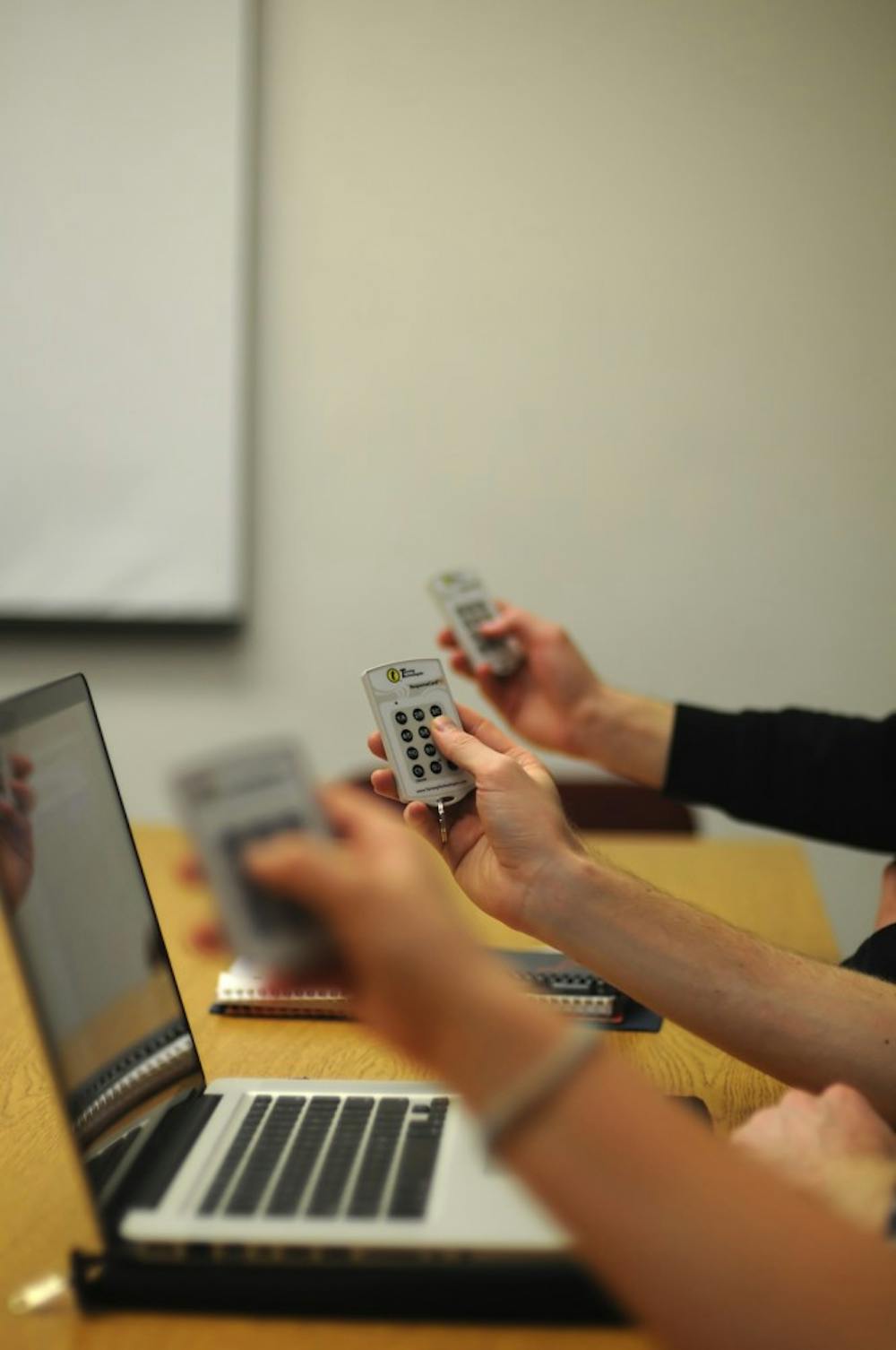With an increasing prevalence of technology in the classroom, some students may be one click closer to an A.
More and more students are becoming familiar with clickers, electronic polling devices that allow teachers to get real-time responses from entire classes. These audience response systems and their software allow teachers to pose questions that students answer on individual remote controls.
According to Graduate School of Education professor Susan Yoon, clickers can benefit both students and teachers. Unlike tests and exams, clickers allow teachers to test students’ comprehension during instruction, a “formative assessment” that Yoon believes can help students learn the material better.
This repeated evaluation allows teachers to “have their fingers on the pulse” of what is being understood in the classroom. That way, Yoon said, teaching strategies can be adjusted to better suit individual classes.
Clickers also foster interaction and dialogue regarding material. They are a form in which shy students’ “voices become heard,” Yoon said.
Some teachers, such as math professor Nakia Rimmer, use clickers as an “efficient way to track attendance and participation in [a] large lecture setting.” According to the syllabus for his Math 114 course, Rimmer allocates three percent of each students’ grade to clicker responses.
Even without the impetus of a grade, students such as College freshman Christina Lee found that clickers can be extremely helpful. Lee, who used a clicker in her Biology 121 class, said the system allowed her “to see where the class was at … and work from there.” She added, however, that she was not graded for her clicker responses.
According to Yoon, the best use of clickers may not necessarily be for grading purposes. Instead, students should answer to ensure that they understand the material. Yoon believes that clickers not only offer formative assessment of the teachers, but are also an “instructional tool” for students. Rimmer also believes that clickers would ideally be used to “gauge student understanding.” When students disagree on answers, Yoon said, this can spark debate and conversation so that those with the wrong answer can learn why they were wrong.
Like most new technology, clickers are expensive. They can cost about $40, and can be resold for about $20.
Yoon foresees a solution to this problem: cell phones. Ideally, she said, there will be “mobile technologies that can emulate the nature, the purpose of polling the group.”
“Increasingly, we are going to see the use of cell phone interaction in classes,” she added.



